People have been talking about the “craft beer revolution” in South Africa for a few years now. It started slowly – the odd Jack Black tap here, a bottle of Darling Slow Beer there. First it was just bearded homebrewers who were interested in ales, then the bearded hipsters joined in and these days you don’t even need a beard at all to be able to drink craft beer. Just a few years ago my beer geek friends (bearded or otherwise) and I would whoop if we found just one craft lager on tap in a restaurant; these days not having at least four or five ales available is cause for many people to move along to the next eatery. Brewery numbers have more than tripled in the past three years and you stumble across them in the unlikeliest of locations – I’ve heard reports that you can find one or two local brews in Orania, for God’s sake, and even Kimberley is jumping on the beerfest bandwagon. But one question keeps rearing its head – is this rapid growth sustainable? Can the SA craft industry continue to grow or is the beery bubble destined to burst?
Last weekend I was at a beer festival in Wilderness. It was fairly well-attended but one thing that struck me was the difference in clientele between the Garden Route gathering and your average Cape Town or Jozi beerfest. Instead of throngs of beautiful, flat-cap-wearing hipsters, the attendees were an even mix of student age drinkers, families with toddlers in tow and retired or soon-to-be-retired couples keen to taste some unusual ales (the latter category did sport the occasional flat cap). In fact, the vast majority of questions posed during my tutored tasting sessions came from a demographic perhaps not usually targeted by craft brewers – white haired ladies expressing a keen interest in beer. And this all got me thinking – when people talk about the craft beer ceiling being reached very soon, they’re thinking of the industry’s typical audience. There are indeed only a certain number of discerning young foodies with adventurous palates and plenty of disposable income, and if you have a dozen bars in a row each with a dozen beers on tap, you’re likely going to end up with a few stale kegs by the end of the month. But despite the growth of the industry, there are plenty of places – and plenty of people – that are just getting their first taste of craft beer. “It’s like a Cape Town beer festival two or three years ago,” said one brewery exhibitor, speaking of the Wilderness crowd’s desire to stick to R5 tasters over delving straight into a pint. Tasters might not be the most profitable way forward for the brewery, but I thought it was awesome to see people so keen to taste as much as possible while they had the chance.
Not that people in Wilderness – or indeed in many towns along the Garden Route – don’t have other opportunities to taste craft beer. Walking around the tiny town, I was wowed by the presence of craft. In not one restaurant when we asked what beers were available did we receive the reply “we have all of the beers”, while going on to list a dozen big lagers in green glass bottles. Craft beer is rising, and rising quickly, spreading to restaurant menus in the smallest of towns. So does that mean that South Africa will escape a craft beer slump?
Probably not. The industry is expanding so rapidly that it has to slow down at some point and it’s the passionate brewers – and the smart business minds – that will survive. In such a cool, thriving industry, there are bound to be bandwagon-jumpers, people who think that throwing a mini brewery onto the grounds of their guest farm, winery or spare garage will make a few quick bucks. But most will tell you that this isn’t an industry for get-rich-quick entrepreneurs and if you lack the love that’s required to make a great beer – and the cash to back it up as a business – your brewing days might be numbered. As consumers get more clued up, tasting a wider array of beers and learning to tell the great from the good, the good from the average and the average from the downright awful, brewers will have to respond in kind, improving their bottling procedures, controlling their fermentation temperatures, fine-tuning their recipes and just generally upgrading their systems. So far there have been very few casualties of the craft beer revolution, but those that fail to respond to their customers demands will likely fall quicker than a lager head in a soapy glass.
Where will that leave us? With nothing but awesome breweries to choose from, I hope. But will craft beer in South Africa ever reach the heights it has in other countries? In quality, sure – we already have a good smattering of world-class craft beers in my opinion. But it terms of market share, I would have to give a sound ‘no’, sadly. In the USA, craft beer now accounts for around 20% of the beer market. A Standard Bank study predicted that by 2017, craft would account for 2.1% of the SA premium beer market – actually quite an impressive number considering the estimate for 2011 was just 0.3% (I say estimate because keeping track of every brewery in the country and how much they produce is no easy feat). So what’s stopping craft from taking a bigger piece of the beer pie? For one thing, the readiness of raw materials – craft brewers have to import much of their malt and even more of their hops if they hope to brew a range of styles. This drives up the price of the finished pint, putting it way out of reach for a vast portion of South Africa’s drinking public. But with the exception of a few major brands, nationwide domination is not the goal. The idea for most South African craft brewers is to serve their local area, to brew some damn good beers and to get people interested in tasting something other than the standard lagers they’ve been used to. And in that respect I’d say that many have already been damn successful.
What do you think? Will the industry grow into an American-style beer behemoth? Will half of our breweries disappear? Will craft fizzle out altogether some day? Share your thoughts in the comments below…

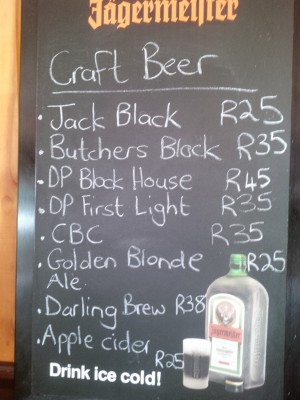
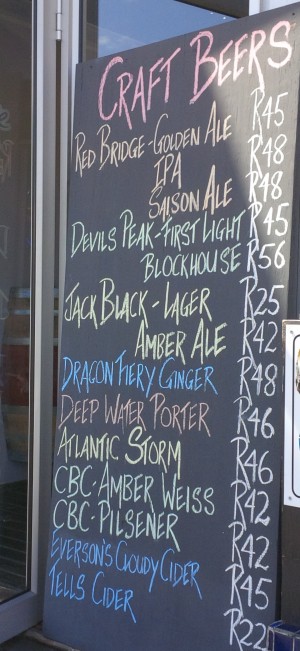
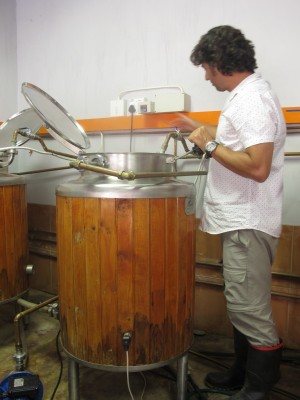

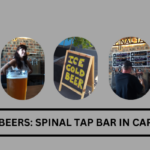
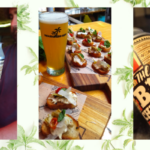


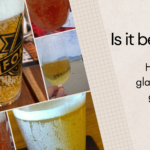
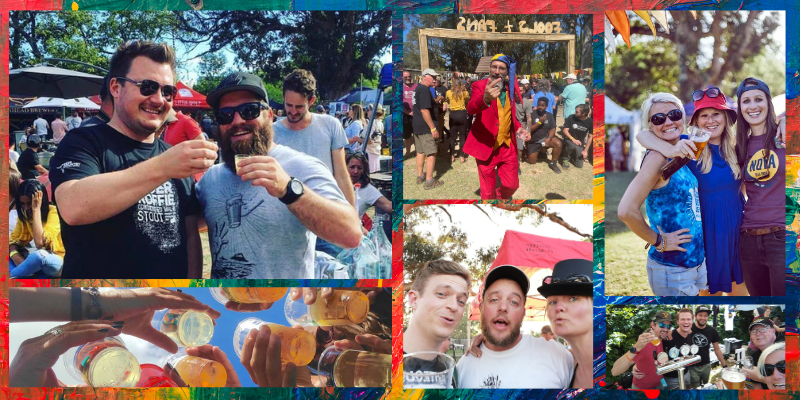
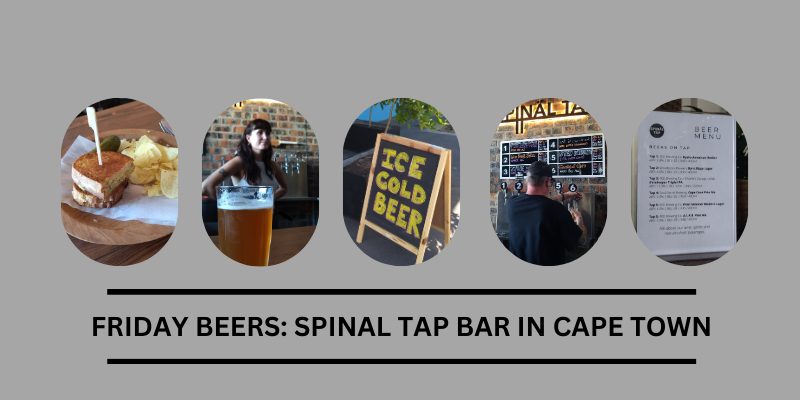
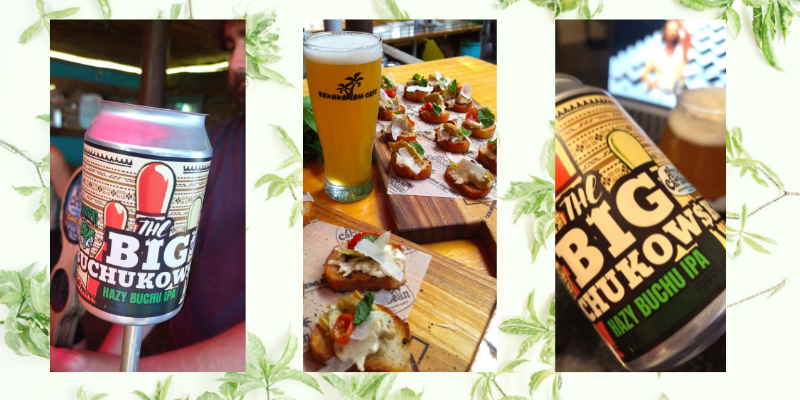
I must admit that I had expected the first bubble pop to have happened already. The fact that it hasn’t is surprising given the massive increase in good breweries and the continued lack of quality in others.
As for the lack of locally produced materials, it would be lovely to get an independent maltster to producing a larger range of speciality malts locally.
Hopefully a micro-maltster will be in South Africa’s future…
The Laws of Supply and Demand should be taken into account. For starters I think there is beyond any doubt a growing demand for craft or “different” types of beers. However, care should be taken on pricing and the quality of the product. For example – here in Pta I can buy at Groenkloof Brauhaus Amm Damm Hefeweis at R35.00 for a 440 ml. At Spar Tops I can buy Paulaner 500ml at R28.00.
Some chancers from Secunda had an IPA (catchy label, good IPA) at R45.00 per 440ml on the market here in Pta – would not touch it with a barge pole as long as I can get Devils Peak Kings Blockhouse or Goodwood Breweries Californicator – yumm at R25.00.
Smack Republic is also a good example of high quality well made ales (the Newton Nemesis stout incredible) at an affordable price. Will support them. CBC beers also spot on but as long as I can buy Jever pils at R18.00 for 330 ml will not buy CBC with exception of their Imperial IPA , Mandarina Bavarina and Harvest Lager.
Tried Harfield 1831- R35.00 .Do not like it – detergent taste???
Cape Town Blonde – Fantastic
I think the chancers will get sorted and the serious brewers with good ales at good pricing will make the cut.
Thanks Andre – I agree that pricing is getting to be a serious issue. Will be addressing it in a future post.
My 2 cents worth.
In a recent conversation with a brewing equipment supplier (on this site) 😉
It was mentioned that the USA has for the last 17 years had a ‘saturated market’ (don’t quite know what that entails).
But that even in this saturated market 90% of brewers increased their brewing capacity within 18 months to feed the demand.
I would presume that we are far from a ‘saturated market’ so there should still be some growth left.
I will agree with Andre though that market forces are going to play a big role in determining the long term players.
Restaurant are also pricing themselves out of the craft market – you will not sell a lot of stout if you are selling a 440ml at R50 and you bought it at R18. (Just crazy)
Good craft beer at reasonable prices served at a brewpub served with good quality food (pub grub – nothing fancy but quality food) I think is a winning formula.
PTA – Capital Craft seems to work like a house on fire and I can highly recommend it for both the beer and the food.
Thanks JP. I’m working on a post addressing the pricing issue – watch this space!
I think that the comments above have alluded to it in an indirect way.
Brewing beer is an industry. It is a business after all as the owner would have to pay his staff – they cannot live on love and charity.
That being said, I do see that there will be many breweries falling by the wayside. This is in part due to the fact that they will not, cannot or refuse to brew good beer. We are a few years behind the chaps across the shores. When their revolution started – they were able to get away with -“It is supposed to taste like that”. I have seen this too many times. I also see people pulling the mickey out of what they are charging for a particular beer. Anyone who has homebrewed, contemplated the costs of starting a brewery or is running their own brewery would be able to tell you what a particular brew cost. Why does one need a ~500% mark up (on cost) from brewer to end user? There are not five middle men between the brewer and the end user (assuming each middle man had a mark up of ~100%), even less for a brew pub. It is when we get greedy that the system will fail us.
My opinion. I think that the better brewers are going to ride this through without a worry. The brewers than brew good quality, consistent and value for money beers will win through. I think there will always be room for the new kid, but they had better have their brewing chops down. The proposed joining of the two giants will make sure of this. When, if they do merge, they are going to squeeze the craft market like nobodies business.
Would I pay a fair price for a good quality ale? Yes, I most certainly would. Would I pay a ridiculous amount for an ale just because it is brewed by x and is a limited addition that probably tastes like the gimmick that it is – No. I think that the onus lies with the brewers to be transparent. Not easy, but it seems to work in yank land and Oz.
Cheers in beers.
Thanks Craig – some excellent points in there! I don’t mind paying the price for a good beer, but it’s got to be worth it – special ingredients, a unique process or just a limited edition (but really good) brew. I do think some people – could be the brewers, could be the bar owners – are starting to take the piss when it comes to the price of craft beer. I hope it won’t be their undoing!
Small batch and seasonal brews are not gimmicks mate, they are art forms and an ”out the box’ though process by brewers that are meant to be appreciated by the people that appreciate different tastes and unique experiences. The possibilities are endless for uncovering different aromas, flavour profiles and combinations, and I for one relish the opportunity to experience their creativity. Also, in order to brew small batches and create something unique, small quantities of specialty ingredients must be brought in at a higher cost, hence high prices. simple. I hope you can open your mind ,and maybe wallet too, to join in on the palatable action! Yes they may be a little more pricey, but a lot of good things in this life are!
Brilliant article, and amazing comments as well. Looking forward to read on pricing, as it’s something that’s of major concern for craft drinkers. Here in joburg you often pay up to R60 for a 440ml.
The guys at White Dog Taproom, in Magalies (Roeks Beer) opened SA’s only carte Blanche craft restaurant. And it’s ALL self-help! CRAFT BEER HEAVEN!!
Thanks Ivor, glad you enjoyed! I read about White Dog – cool idea, though I am a little concerned about the drink-driving aspect!!